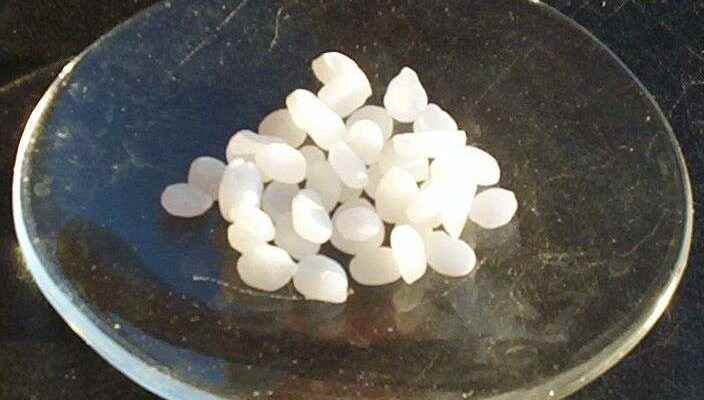Sodium hydroxide (NaOH), also called caustic soda, is a strong base which occurs, at room temperature, in solid form. It is made up of cations sodium (N / A+) and hydroxide anions (OH–). It is very soluble in water. Its aqueous solution is transparent and often called welded. Concentrated, it is, like sodium hydroxide in the solid state, particularly corrosive.
Use of sodium hydroxide or caustic soda
Sodium hydroxide is often used in the chemical industry, to control an alkaline medium or to regulate the acidity of a process. It is also used in the manufacture of paper pulp, the treatment of natural fibers or the petroleum industry. He is also the main agent for unblockers of pipelines.
Production of sodium hydroxide
Almost all of sodium hydroxide today is produced by electrolysis of brines. Sodium hydroxide can also be obtained through a causticization reaction from natural sodium carbonate present in some ores and in vegetable ashes:
N / A2CO3 + Ca (OH)2 → CaCO3 + 2 NaOH
The dangers of sodium hydroxide
The sodium hydroxide-water mixture is strongly exothermic and can cause dangerous splashing. Because soda is irritating and corrosive, both for the skin and for eyes and the respiratory and digestive tracts. It must therefore be handled with care.
Sodium hydroxide and the pH of water
Soda tends to raise the pH streams. What to threaten the wildlife and aquatic flora.
You will also be interested
Interested in what you just read?
.
fs4
